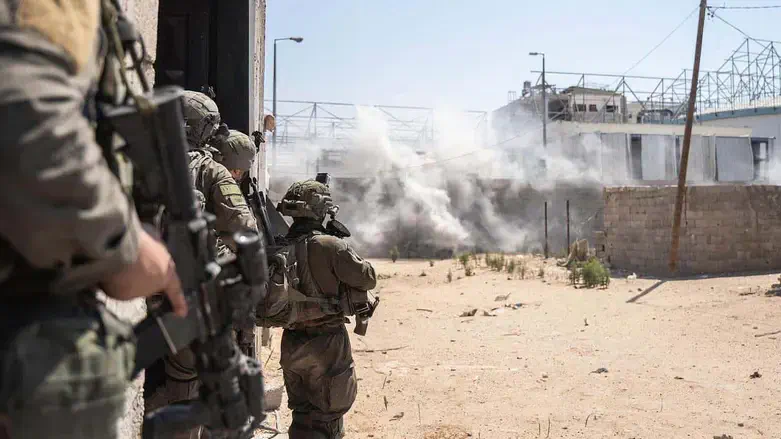
Yaakov Lappinis an Israel-based military affairs correspondent and analyst. He is the in-house analyst at the Miryam Institute; a research associate at the Alma Research and Education Center; and a research associate at the Begin-Sadat Center for Strategic Studies at Bar-Ilan University. He is a frequent guest commentator on international television news networks, including Sky News and i24 News. Lappin is the author of Virtual Caliphate: Exposing the Islamist State on the Internet. Follow him at: www.patreon.com/yaakovlappin.
(JNS) According to a report published by Israel’s Channel 12 News on Tuesday, Israeli security officials have identified disturbing signs of renewed Hamas activity in the northern Gaza Strip. This resurgence, characterized by the recruitment of approximately 3,000 new terrorist operatives, is fueling concerns that the terrorist organization is rapidly rebuilding its operational capabilities in the northern Strip, according to the report.
These new recruits are said to be being supplied with weapons and ammunition, and to be receiving payment for their involvement in Hamas activities. In response to these developments, Israeli defense officials are reportedly contemplating a large-scale re-entry into northern Gaza.
According to Col. (ret.) Jacques Neriah, an analyst at the Jerusalem Center for Security and Foreign Affairs and a former Israeli Military Intelligence deputy head for assessment, the report is credible, but at the same time somewhat misleading.
“Hamas is succeeding in recruiting new fighters, but they are of much lower quality,” he says. In the absence of a political plan for the future of the enclave, he argued, such activity was inevitable.
“As long as the [Israeli] political echelon has not decided what to do with Gaza, the IDF will be left with two options: permanent occupation and the imposition of military governance, or intermittent, on-and-off operations” to prevent the terrorist group from rebuilding itself, he said.
During the initial weeks of the conflict, the Israel Defense Forces deployed a large number of ground forces in northern Gaza, with Gaza City being identified as Hamas’s operational center of gravity. The ground maneuver, launched on Oct. 27, involved the deployment of armored, infantry and engineering units, all with substantial air support. These operations severely degraded Hamas’s operational capacity and disbanded its organized territorial units in the area.
However, the IDF has since moved to a less intensive phase of combat, with the primary focus being on southern Gaza.
Professor Kobi Michael, a senior researcher at the Misgav Institute for National Security and Zionist Strategy and the Tel Aviv-based Institute for National Security Studies, said that while Hamas was rebuilding its forces to some extent, it was “certainly” not replacing what it had lost.
“It still cannot function in an organized military formation. It is making efforts to recruit youths to fill the ranks, but it does not have the ability to train them, so this is a limited achievement. They are mainly turning into cannon fodder,” he said.
Michael went on to say that Hamas’s more substantial gains have actually been in the civilian domain, through the takeover of humanitarian aid distribution.
However, he added, “There is no doubt that it will continue to make an effort to recover [in northern Gaza], including militarily, and its achievements will be more significant if Israel is not there in the form of a fixed military presence, a military administration.” A general siege on the area until the remainder of Hamas’s remaining organized forces is destroyed is also needed, he said.
“The alternative is to go in under the framework of targeted raids, once in a while, according to intelligence, and to exit. Hamas will then try to once again reorganize,” he added.
A military administration, Michael argued, would be aimed at ensuring full Israeli control over aid distribution in order to help break Hamas’s control over Gaza’s civilian population.
As it would require a constant military presence on the ground, an Israeli military administration would also make it “very difficult” for Hamas to reorganize militarily, he said.
“The military presence will create a continuous friction, which will generate more intelligence and more operational opportunities to severely harm Hamas,” he argued. A military administration will also enable the development of conditions for a civilian government alternative to Hamas, he added. “Such an alternative cannot exist and no element will be willing or able to enter Gaza so long as Hamas remains there with significant military capabilities,” he said. “The IDF is the only element in the world that can disband Hamas.”